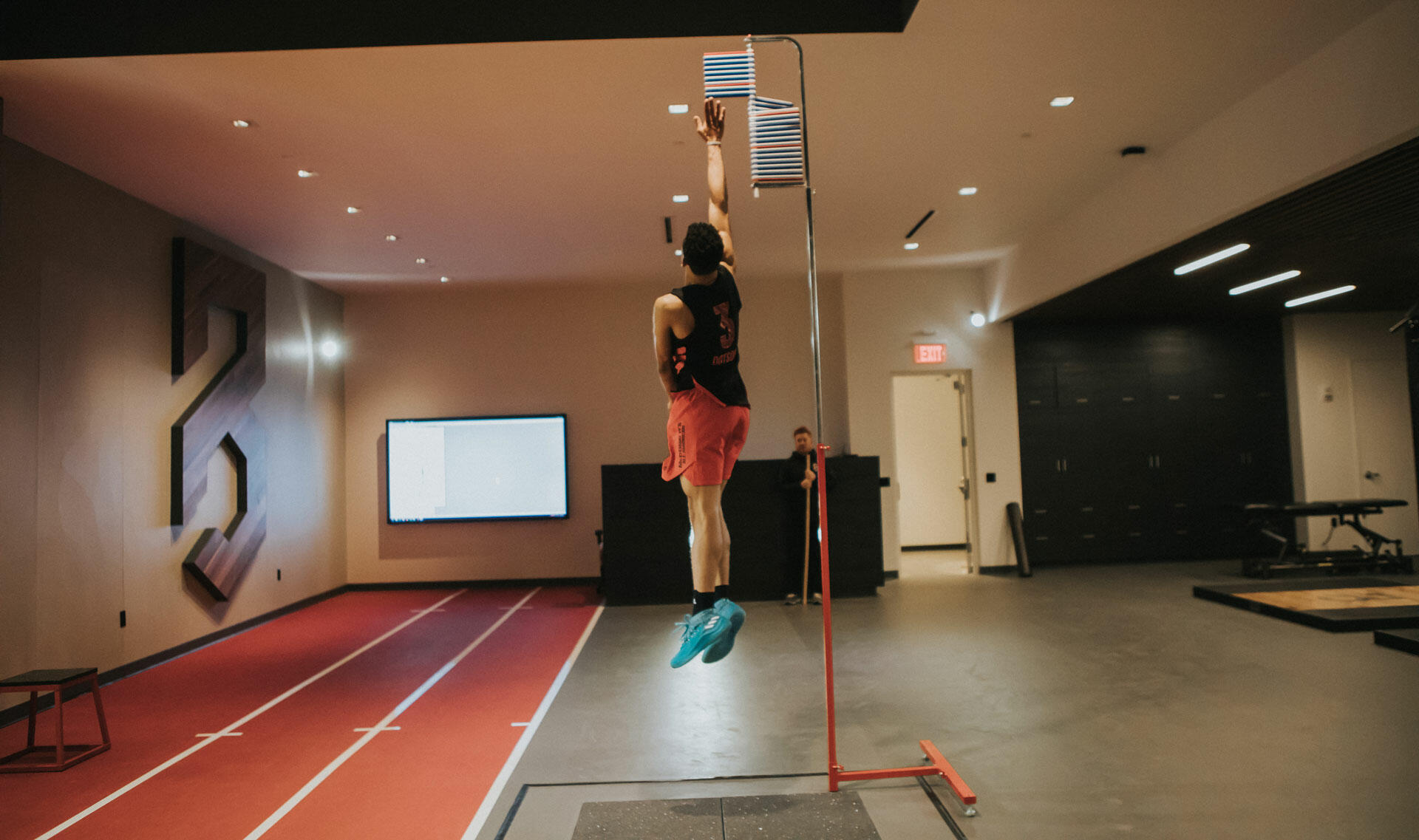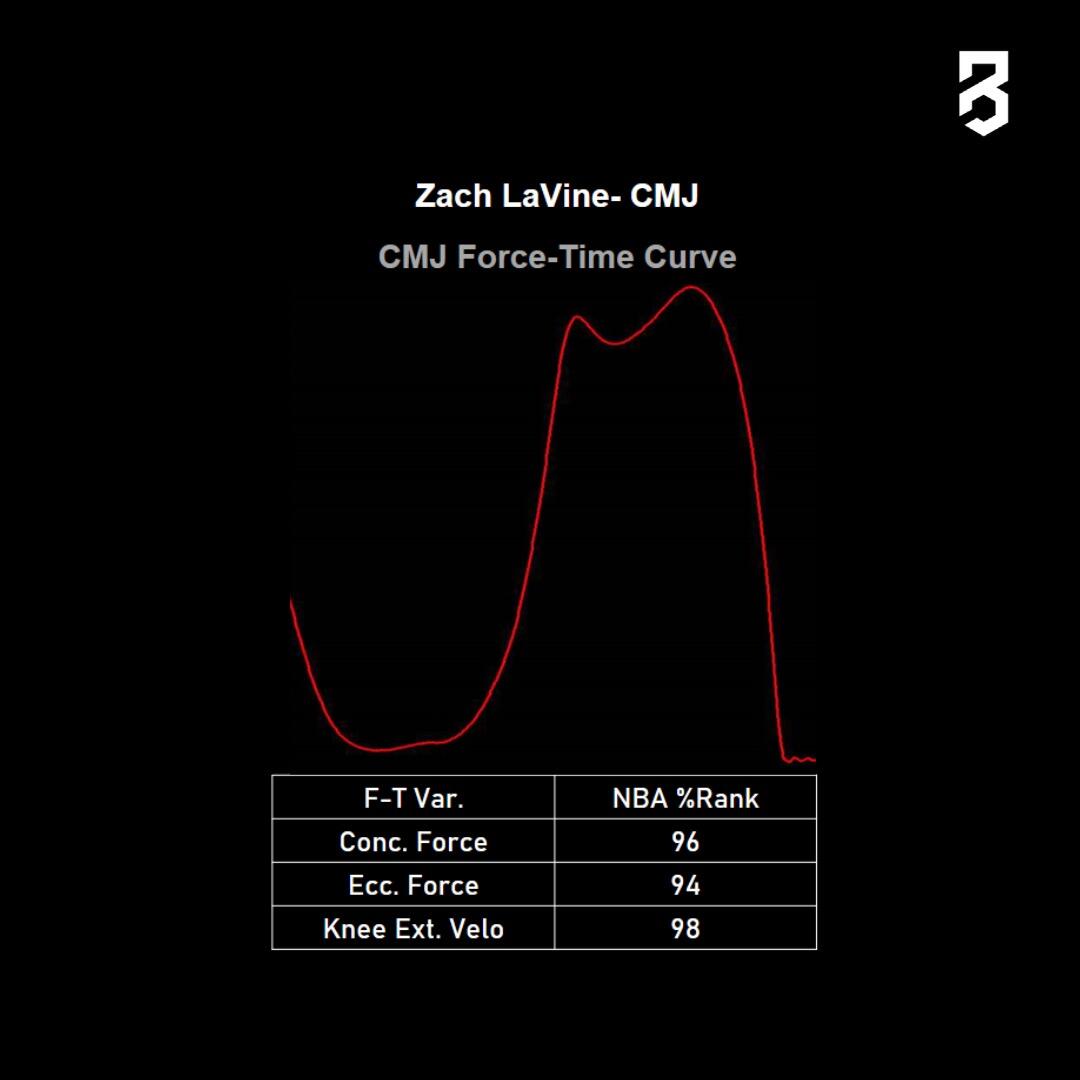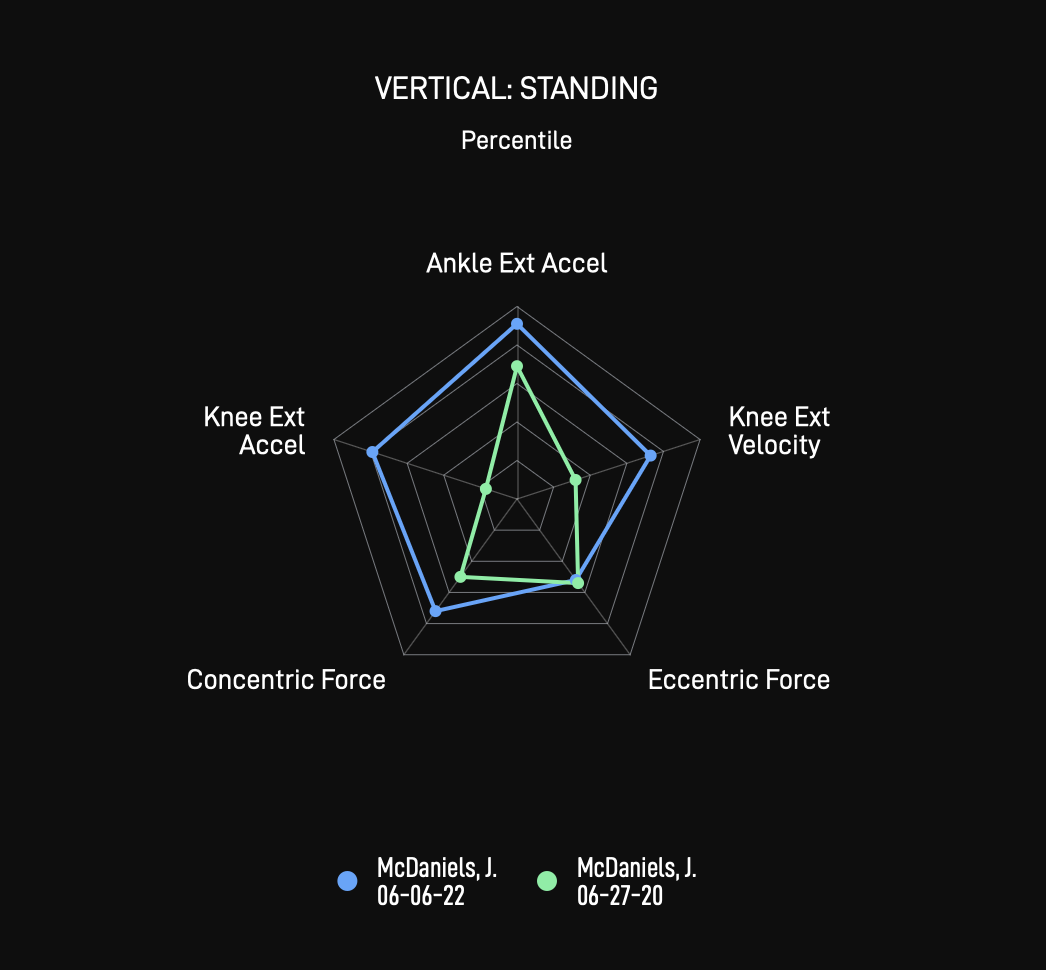
In order to achieve better performance, it helps to understand the underpinning physical qualities and biomechanical patterns that are associated with specific performance outcomes. P3 has kinetic and kinematic data on many of the best athletes in various sports doing max-effort jumps, accelerations and change of direction tasks. This has allowed P3 to identify the key biomechanical qualities that elite athletes possess.

The P3 assessment provides a complete biomechanical profile of an athlete at a specific cross section in-time. We call these profiles “movement fingerprints” as they are unique to each athlete.
In addition to providing an objective and nuanced understanding of an athlete’s strengths, weaknesses and development needs, each profile serves as a reference for being able to precisely track development. In the unfortunate scenario of an injury, these baseline tests are also immensely valuable for return to play checkpoints.

One of the unique aspects of a P3 profile is the ability to compare yourself or your athlete to the best athletes in the world, in the metrics that matter most. This allows the athlete to understand where they are at relative to the competition or where they need to get to to be able to better compete at a higher level of play.